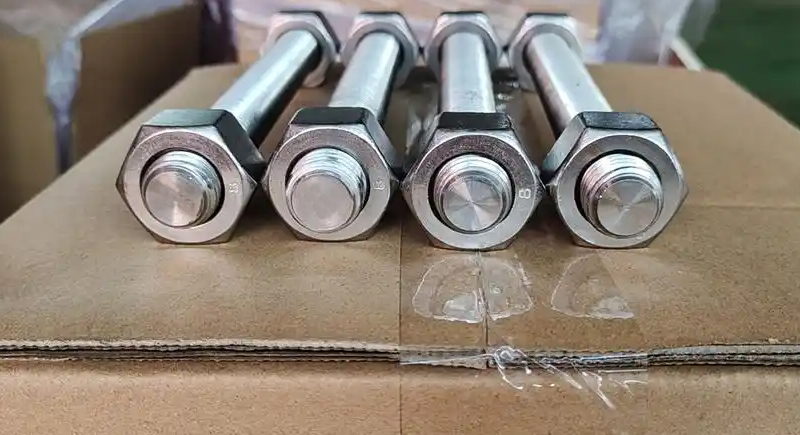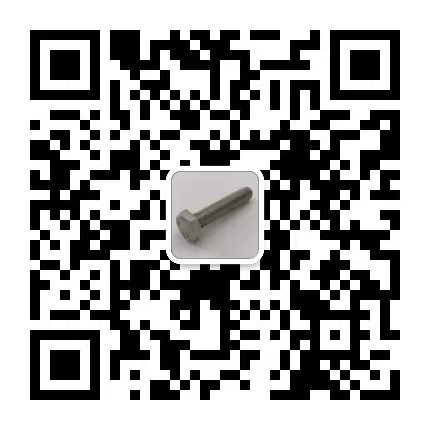VIDEO & CENTER

Stud (Stud), also known as double-headed screws or double-headed studs. Used to connect the mechanical fixed link function, both ends of the stud have threads, the middle of the screw, there are thick and thin. Generally used in mining machinery, Bridges, automobiles, motorcycles, boiler steel structures, hanging towers, long-span steel structures and large buildings.
01
Basic introduction
Bolts are screws with larger diameters and can also have no head, such as stud bolts. Generally, it is not called "stud" but "stud". The most common form of double-ended stud is threaded at both ends and a smooth rod in the middle.
The most typical use: anchor bolts, or places similar to anchor bolts, thicker connections, when ordinary bolts cannot be achieved.
02
Specification mark
Equal length stud with thread specification d=M12, nominal length L=80mm and performance grade 4.8 is fully marked as: GB 901 M12×80.

03
Main use
- Used in the main body of large equipment, need to install accessories, such as sight mirror, mechanical seal seat, reducer rack, etc. At this time, the use of the stud, one end screwed into the main body, the installation of the attachment after the other end with the nut, because the attachment is often removed, the thread will be worn or damaged, the use of the stud replacement will be very convenient.
- When the thickness of the connecting body is very large and the bolt length is very long, the stud will be used.
- Used to connect thick plates and places that are inconvenient to use hex bolts, such as concrete roof truss, roof beam suspension monorail beam suspension.
04
Anti-loosening purpose
In actual work, the external load has vibration, change, high temperature creep of the material, which will cause the friction to decrease, the positive pressure in the thread pair disappears at a certain moment, the friction is zero, so that the thread connection is loose, such as repeated action, the thread connection will relax and fail. Therefore, it is necessary to prevent loose, otherwise it will affect the normal work and cause accidents.
05
Surface treatment
Stud generally need to undergo surface treatment, bolt surface treatment of many types, generally commonly used electroplating, blackening, oxidation, phosphating, non-electrolytic zinc sheet coating treatment. However, electroplated fasteners occupy a large proportion in the actual use of fasteners. Especially in automobiles, tractors, home appliances, instrumentation, aerospace, communications and other industries and fields more widely used.
However, for threaded fasteners, the use of not only requires a certain anti-corrosion ability, but also must ensure the interchangeability of the thread, which can also be called spinning. In order to meet the dual-use performance of "anti-corrosion" and "interchangeability" required by threaded fasteners in use at the same time, it is very necessary to formulate special electroplating standards.
GB/T5267.1-2002[Threaded fastener Electroplating] standard is one of the national standard "Fastener surface treatment" series standards, the standard includes: GB/T5267.1-2002[Fastener electroplating]; GB/T5267.2-2002 [non-electrolytic zinc sheet coating for fasteners] two standards. This standard is equivalent to the international standard ISO4042; 1999 [threaded fasteners electroplating]. This standard replaces GB/T5267-1985 [Threaded Fasteners Electroplating] standard.
06
Basic knowledge and maintenance
The production of stud bolts requires a fixed installation and machine tool processing, of course, in fact, the processing procedure is relatively simple, mainly the following processes: The first is the need to pull out, pulling out is to use the pulling machine to pull the distorted material straight, after this process to carry out the next process, the next process is to use the cutting machine to pull out the long material according to customer requirements cut into the length required by the customer, which completes the second process, the third process is to cut the good short material on the wire rolling machine roll out the wire buckle; Here the ordinary stud is finished processing, of course, if you need other requirements, it also needs other processes.
Stud bolts are used on large equipment such as reducer racks. In actual use, the external load will have vibration coupled with the influence of temperature, there will be less friction, and the threaded connection will relax and fail over time. So in peacetime need to do a good job of stud maintenance work.
Stud or anchor bolt will have problems under the action of mechanical friction for a long time, when there is a problem, the engine oil pan should be removed, carefully check the use of the engine bushing, check whether the gap between the bushing is too large, if the gap is too large, it should be replaced in time.
Replace the connecting rod bolts when you replace the stud bolts. Some large equipment such as nail making machine in normal operation, if you find that the engine is not running very stable or abnormal sound, you should also stop and check in time to avoid greater problems.
At each time of maintenance, it is necessary to check the newly replaced stud and the newly replaced other accessories, the inspection focuses on the head and guide part of the stud, but also strictly check whether each part of the thread has cracks or dents, but also to see whether the tooth shape of the stud has changed.
Check whether the pitch is abnormal, if there is an abnormal situation can not be used. The torque wrench should be used when installing the connecting rod cover. Must be tightened in accordance with the prescribed standards, the torque can not be too large or too small, but also pay attention to the selection of matching manufacturers of stud and stud.














